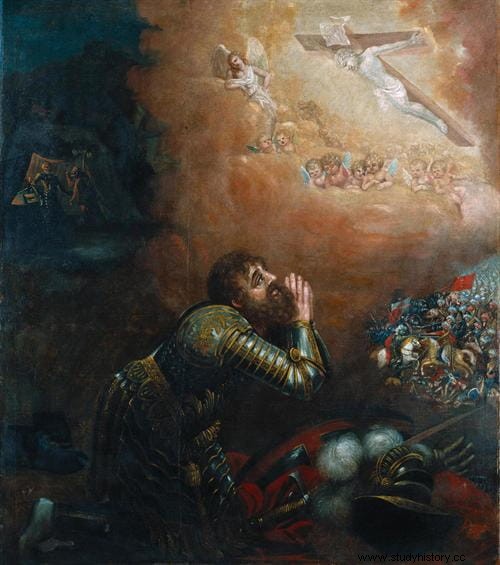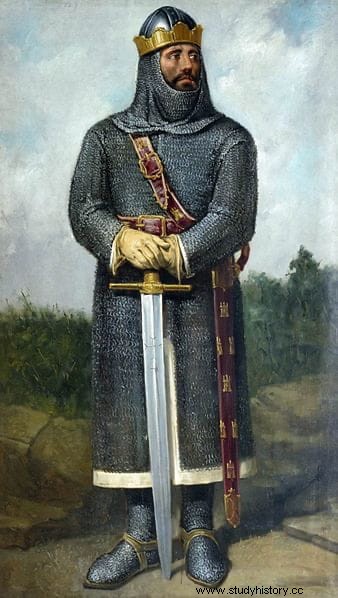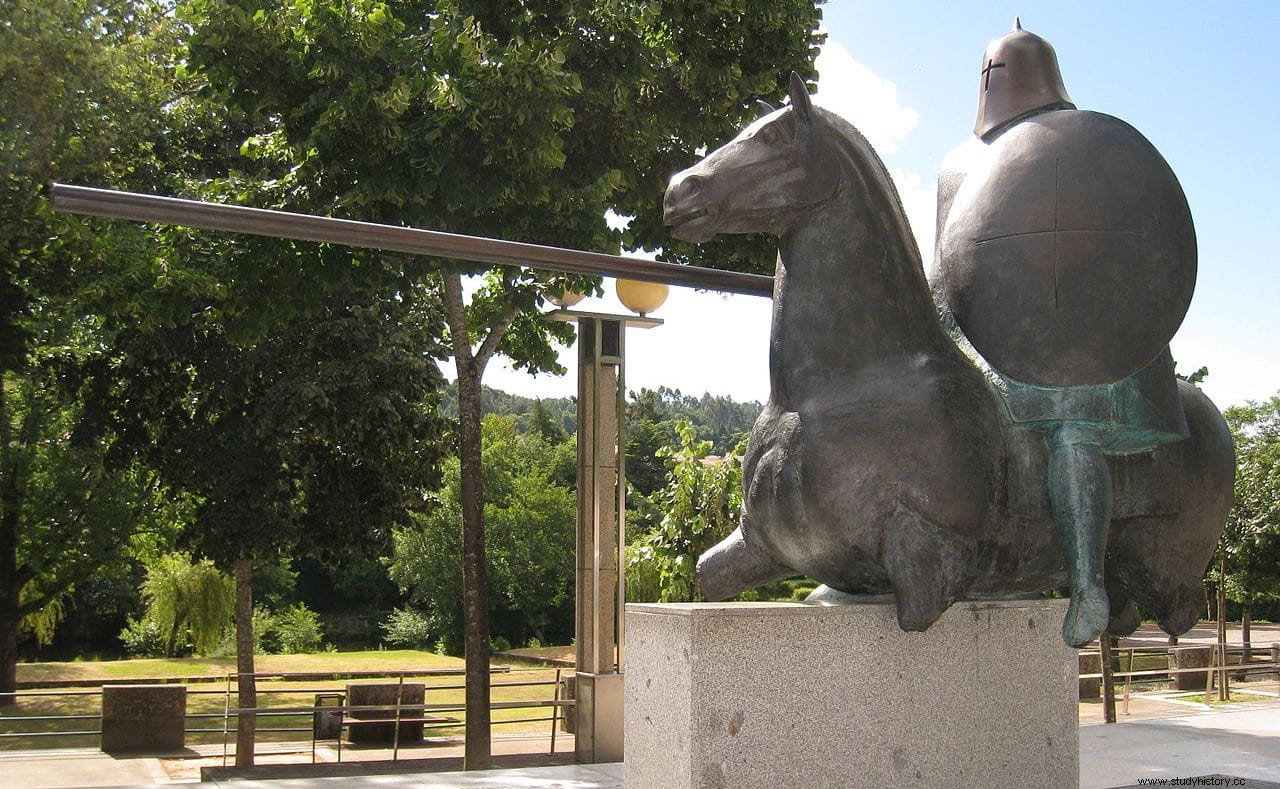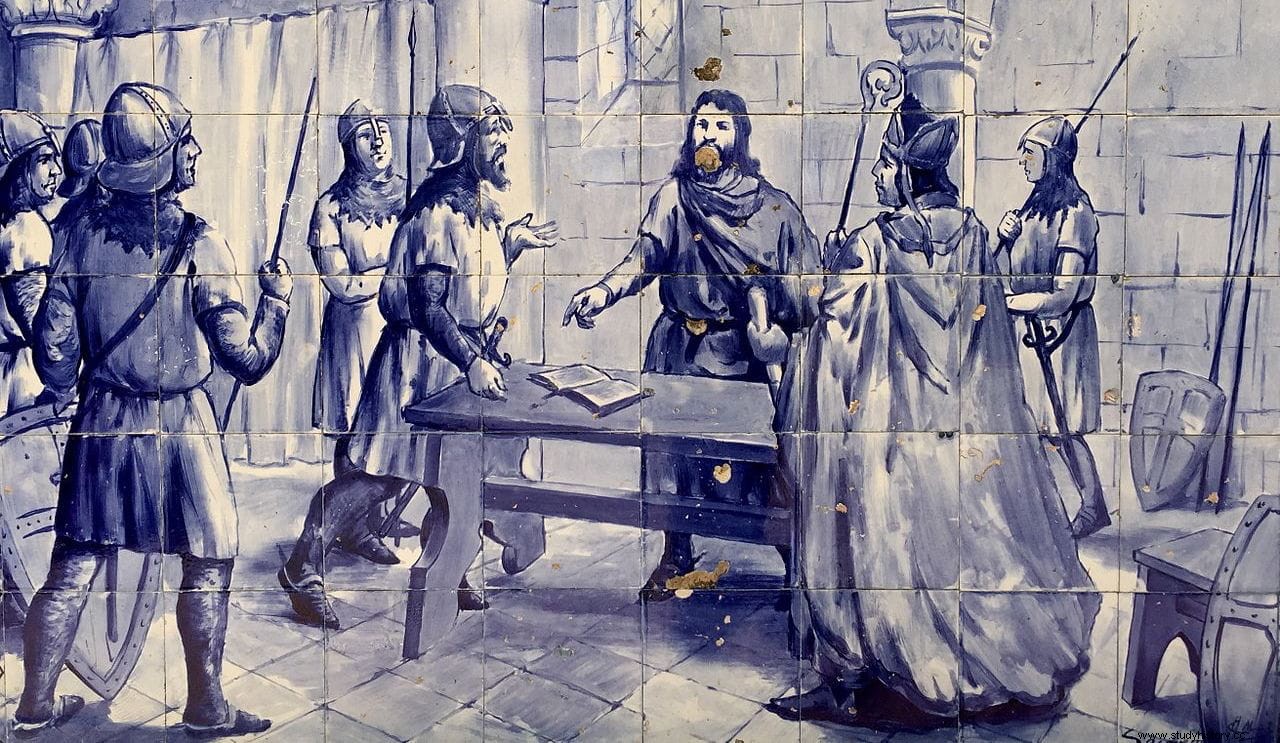In 2013, in the municipality of Arcos de Valdevez, located in the northern Portuguese region of Alto Minho, the União das Freguesias de Grade e Carralcova was created, a merger of the two homonymous parishes. The first has a certain fame because in its Mother Church there is a tabernacle with two doors and closed with seven keys, all different, in which a relic is jealously preserved. It is a lignum crucis (that is, a piece of the cross on which Christ died) that is only exhibited once in the whole year -forty days after Easter- and is considered a patron symbol of war (to the point that, according to the tradition, no soldier born in Grade has died in combat) because he was found on a battlefield:that of the famous Valdevez Archery Tournament.
It is an episode that today is situated halfway between history and the founding myth, since the context in which it would have occurred was the creation of the Kingdom of Portugal in the 12th century after gaining independence from that of León. The exact date on which it took place is not known, since it was always placed in the summer of 1140, but the latest studies seem to point to the spring of the following year.

In any case, the beginning of everything must go back to the Battle of Ourique, which on July 25, 1139, was fought in the Lower Alentejo by the army of the infante Afonso Henriques (Alfonso Henríquez) against the Almoravid troops, superior in number (between 10,000 and 40,000 men, according to Muslim sources; 400,000 according to Christian sources) but whom he was able to defeat with the providential help of Jesus Christ, who appeared surrounded by angels before the clash predicting victory.
At least that's what the legend says, probably distorted by time and political intentionality, since originally the help would have come from Santiago Matamoros -it was the day of the apostle's name day- but later it was replaced because it was the patron saint of Castilla y León .
The important thing is that Henriques's victory was so resounding that his people acclaimed him as King of Portugal right there. Portuguese independence, obviously, was something that his cousin and lord, Alfonso VII of León, could not simply accept, since he considered himself the most powerful monarch of the Iberian Christian kingdoms, to the point that he had himself crowned Imperator totus Hispaniae , an empty title that, with slight variations, had been used by the Leonese kings since the 10th century to underline their supremacy over the others -who were in the process of formation- and justify the legitimacy of their dynasty as heir to the Visigothic state.

Henriques had not only refused to attend the imperial coronation of his cousin but also invaded the south of Galicia, taking advantage of the fact that León was in conflict with Navarre. The powerful Leonese army recovered what was lost and, in turn, occupied the County of Portucalense, a territory belonging to the Kingdom of Galicia that extended more or less through what is now the Douro Litoral region and of which Henriques was the owner.
Through the Treaty of Tuy of 1137, peace was signed and the Portuguese swore allegiance to Alfonso VIII, but now the ties were completely and openly broken, especially after the infant adopted the title of Rex Portugallensis . When the Cortes of Lamego confirmed the proclamation of Henriques as Afonso I of Portugal, there was no turning back, thus culminating a policy that had been initiated by his father, Henry of Burgundy.
León mobilized his troops again, who entered Alto Minho and advanced towards the Condado Portucalense through the Sierra del Soajo, destroying whatever castle they found in their path; Upon reaching Arcos de Valdevez they met the enemy. There was an impasse during which, the Leonese advance guard fell into an ambush, and Count Ramiro Froilaz, Viscount Ponce Giraldo de Cabrera from Girona and the Galician brothers Fernando and Bermudo Pérez de Traba were arrested. This compensated a little for the inequality of forces since the army of Alfonso VII was much superior in number, but it did not prevent the expected pitched battle from leaving both sides weakened to face the common danger posed by the Almoravids.

To avoid this, emissaries were sent to their respective camps (the Leonese were in Penha da Rainha, Portela de Vez, while the Portuguese raised their real on one of the nearby hills with a valley separating them) with the mission of agreeing on a tournament. The tournaments were typically medieval competitions - although they derived from the hippika gymnasia Romans and lasted well into the Modern Age-, in which teams of knights disputed with each other.
Most of the time they were organized for various reasons (parties, coronations, reception of ambassadors, treaties...) and, therefore, they had a reasonably bloodless character, sports we could say. However, sometimes they were held to resolve disputes by avoiding wars, such as the Challenge of Bordeaux, which in 1283 pitted the one hundred knights of Charles of Anjou, King of Naples, against as many of Peter III the Great, monarch of Aragon, for the possession of Sicily.
Something similar was what was agreed in Arcos de Valdevez, although the previous conditions or the development of the combat are not clear, since the documentary sources are quite limited in this regard and do not go into details. The Chronica Adefonsi Imperatoris , an anonymous work -probably by a clergyman, pointing to the Bishop of Astorga, Arnaldo- which would perhaps be forgettable were it not for the fact that it contains the Poema de Almería , considered the best work in Latin verse of the Spanish Middle Ages, written a couple of decades after the events, is a biography of Alfonso VII that does not hide his sympathies towards the emperor but hardly says about the tournament that noblemen from both armies went down to the valley to fight and many ended up prisoners.
For its part, the Chronicon Lusitanum , which focuses mainly on the reign of Afonso I and the birth of Portugal, narrates - also in Latin - that a bufurdium was agreed upon (a tournament with a scape, a small throwing spear that was also used in cane games), after which many local and Leonese knights ended up captive. The latter included Fernando Pérez Furtado (illegitimate son of Queen Urraca and therefore half-brother of Alfonso VII), Rodrigo Fernández de Castro (a veteran Castilian warrior who had been a lieutenant to the king and governor of Toledo) and other notables. characters. The other bibliographic sources are much later and are based on those cited.

In other words, the fate of the weapons rather favored the Portuguese, who would have received an extra injection of morale when finding the aforementioned relic in those circumstances and being shown, as in Ourique, that God was on their side. This type of providentialism had taken root in Christian armies since the story of Constantine's dream and that is why legends about the appearances of Santiago or Jesus Christ in the midst of battle were frequent, as well as those of chance finds of carvings of the Virgin. In this case with a double meaning, since the tournament, in practice and given those who were in contention, came to be a kind of political ordeal.
In fact, it was Cardinal Guido de Vico, papal legate in the Iberian Peninsula, who, after the good disposition shown in the exchange of prisoners, managed to get the two adversaries to sign peace in October 1143 through the Treaty of Zamora. Through that document, which both signed, Alfonso VII tacitly recognized the title of king that Henriques had assumed, just as he did the same with that of emperor that his cousin held. In other words, the existence of the Kingdom of Portugal was admitted but it was subordinated to that of León because the imperator had a higher category than the rex . This peculiar relationship was strengthened with the cession to the Portuguese of the fortress of Astorga.

Later, João Peculiar, Archbishop of Braga, got Pope Innocent II to accept Afonso I's offer to declare himself censual (dependent) his and knight of the Pope, paying him a census of four ounces of gold per year (one ounce was equivalent to about 31 grams, approximately) in exchange for the Holy See defending him «from any other ecclesiastical or civil power » . In practice, this disassociated the Portuguese monarch from his vassalage to Alfonso VII, even though the Supreme Pontiff did not want to recognize him explicitly as king but as doge . The Portuguese sovereign would have to wait thirty-six years, until 1179, for Pope Alexander III to publish the bull Manifestis probatum , in which he said verbatim:
